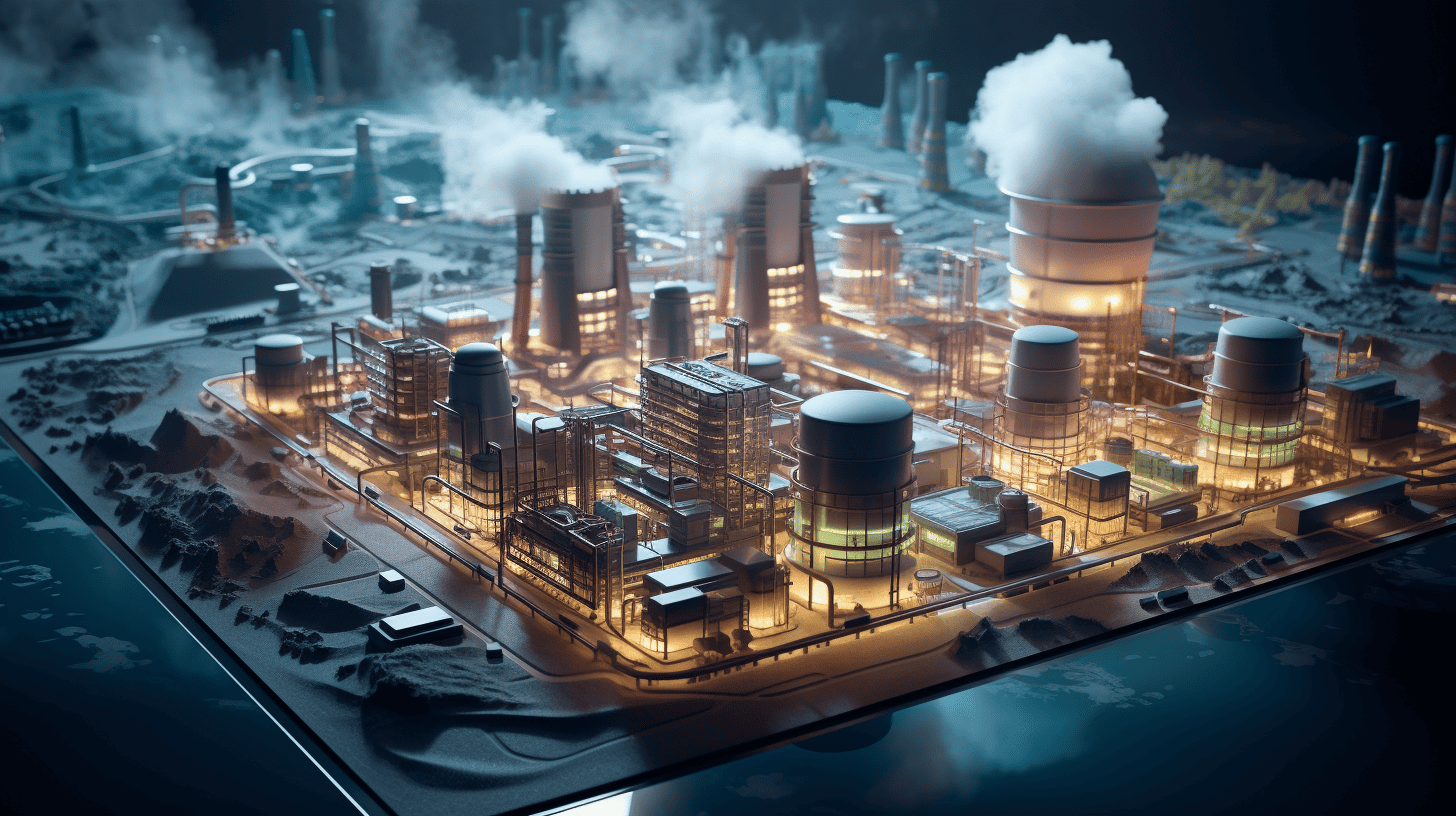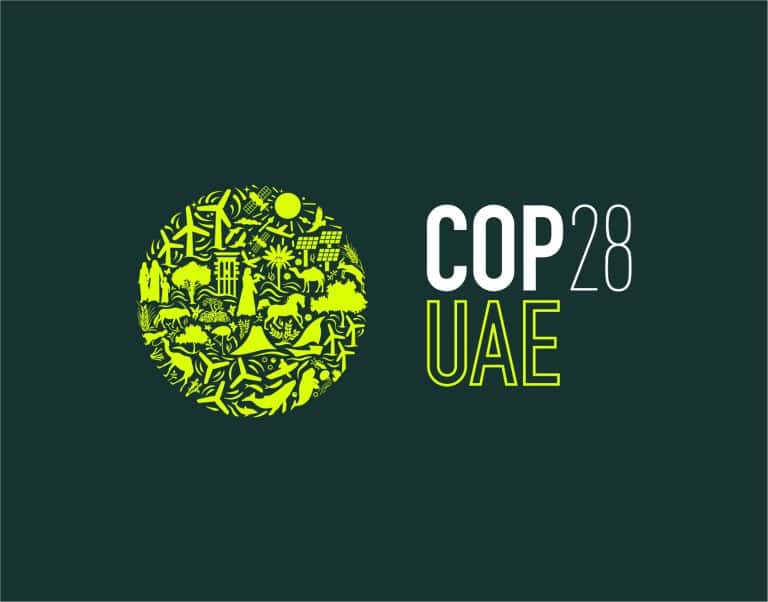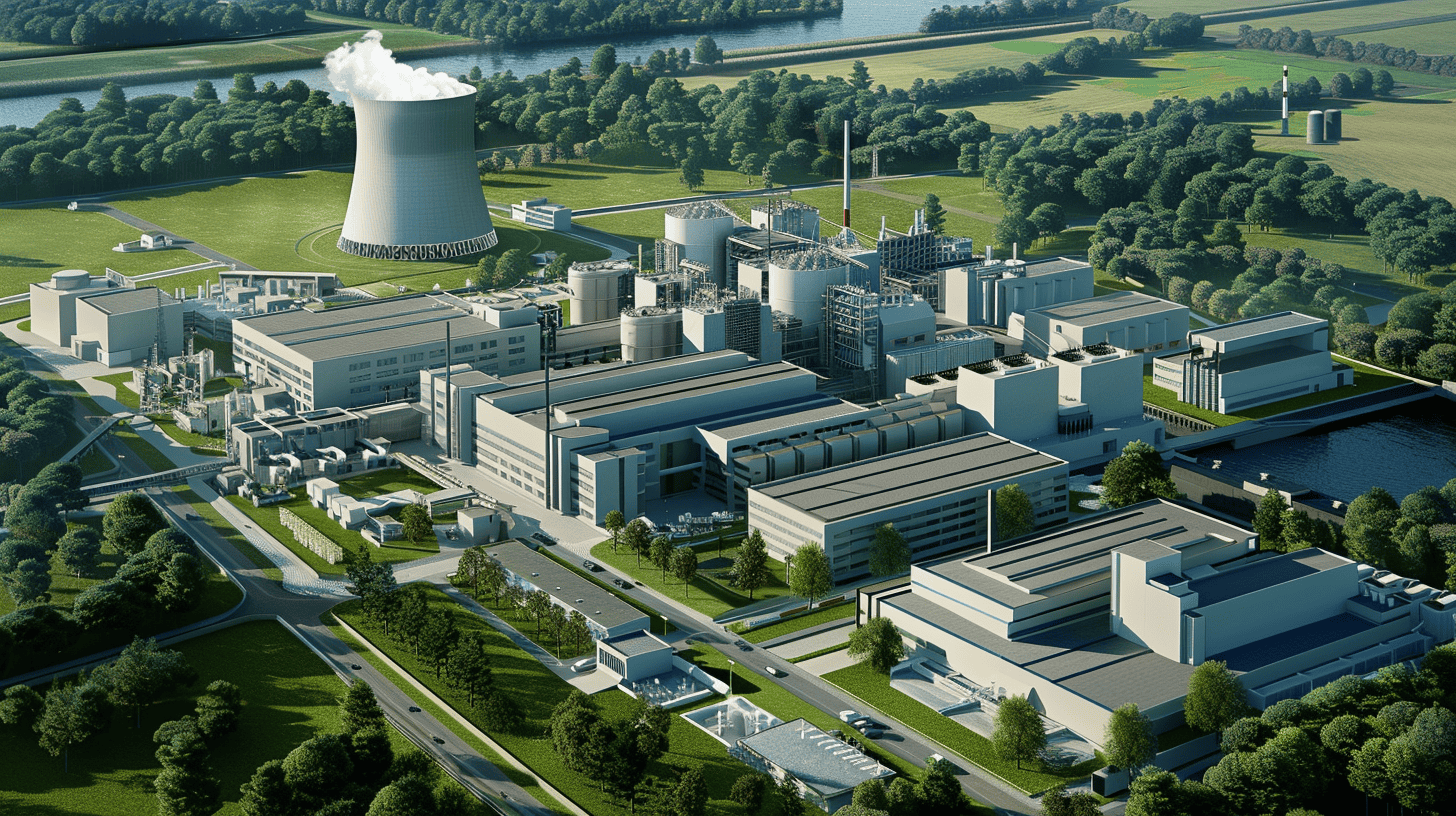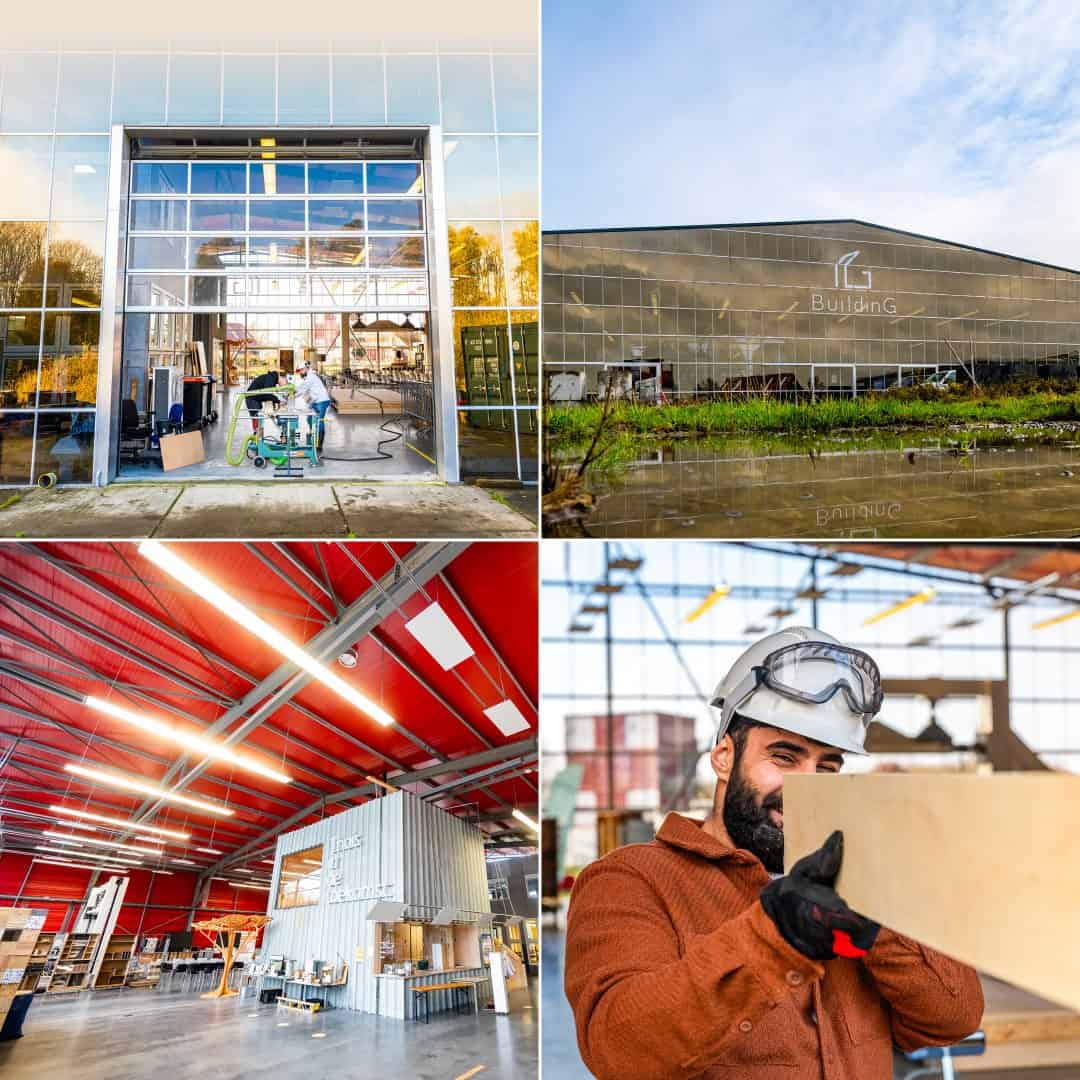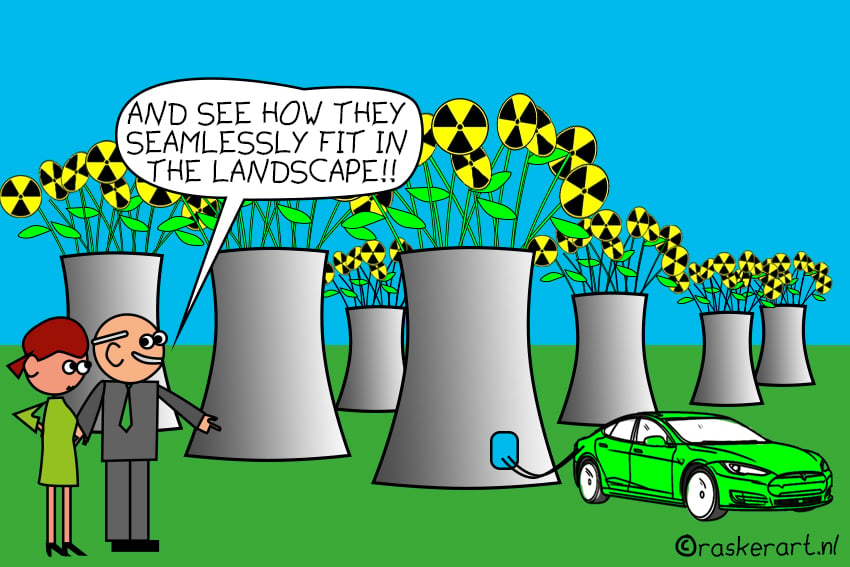
The price of natural gas has risen dramatically. What’s more, there is a lot of opposition to the unbridled growth of all kinds of renewable energy. In light of that, the debate about nuclear power is flaring up again. The United Kingdom announced this week that it is planning a new medium-sized nuclear power plant, built by Rolls Royce. Plans for six new nuclear power plants are also underway in France, French President Emmanuel Macron announced last month. And how real is the likelihood of two more nuclear power plants in the Netherlands?
Nuclear power as a way out of the current energy and climate crisis. We talk about it with Martien Visser, lecturer in energy transition at the Hanze University of Applied Sciences in Groningen, the Netherlands and manager of corporate strategy at the Gasunie energy company. He sees nuclear energy primarily as one of the sources within the whole palette of essential CO2-free energy that we ought not to write off as a matter of course. Peter de Jong, program leader for electricity production at the Natuur & Milieu (Nature & Environment, an independent environmental organization), disagrees and says that we would be better off investing our money in solar and wind energy.
CO2-free
“Nuclear power barely releases any CO2,” Visser points out. “It is true that the production of uranium and the construction of nuclear power plants does lead to CO2 emissions, but the same applies to the production and construction of, for example, solar parks, wind farms and dams. Nuclear power therefore contributes to curbing global warming.”
Safe
“Of course, I am not a nuclear energy specialist, but I have the distinct impression that the technology is safe. I would be perfectly happy to live in Borssele. That goes for more Dutch people too. Zeeland is lobbying for a second nuclear power station at Borssele. A lot of Dutch people also think it is safe enough to go on vacation to France. There are plenty of nuclear power stations there. If we were really worried about safety, we would all move to Italy, where there are no nuclear power stations. As for the waste, the amount of heavy radioactive waste is limited and can be stored above ground if need be.”
Stable
“Nuclear power production is not dependent on the weather, like sun and wind are. Except during scheduled maintenance periods, we can rely on the output of nuclear power plants. Some might think that we will eventually adapt our energy demand significantly to the availability of weather-dependent sources, but I have my doubts about that. Most processes will keep on going. We also want to be able to drive a car if there is hardly any or no wind at all for a week. This means that, in addition to sun and wind, we need an extremely large stable CO2-free source. Biomass is that source at the moment, but it also has its downsides and opponents. Hydrogen could be a good option, but it is slow to develop.”
Not reliant on one source
“The current natural gas crisis demonstrates that we should not make ourselves too dependent on one energy source. We now seem to be opting en masse for wind energy, especially offshore, but who can tell me that climate change won’t cause months of windless periods in northwestern Europe by 2050? This is why it is good to have a range of sources. If one of those sources fails, there are still alternatives.”
“As far as that is concerned, it is not even that important whether a system with nuclear energy is slightly cheaper or more expensive than a system using solar or wind energy or biomass. It is more important to not to put too many eggs in one basket and to work on a dependable energy system that can cope with unexpected events. Incidentally, it is a certainty that nuclear power plants can become much cheaper than at present if they are built in series and are standardized. In this sense, it is important to initiate this type of development together with a number of like-minded European countries.”
Also read: UK backs new small nuclear energy
“We also don’t want windmills”
Every alternative to fossil fuel has drawbacks, it is important to realize that, according to Visser. “We don’t want biomass either, because it’s bad for biodiversity. Countries that have mountains do not want new reservoirs. We also don’t want onshore wind turbines. Wind farms at sea are fine, but at some point the sea will become too full. There are also other users. Especially in Belgium and Germany, which have far less sea area than we do.
“Solar parks and lining our roofs with solar panels do provide a lot of energy in the summer, but only a small amount in the winter. On the other hand, we do not want to give up our prosperity so easily and for that we do need energy, a lot of energy. Of course, we can and must save a great deal of energy too, but that does not alter the fact that we will be using lots of energy in 2050. Nuclear energy, by the way, is not a panacea. It is only one of the potential sources. Even with nuclear power, we will still need a lot of solar and wind and other forms of energy like biomass, hydrogen and geothermal.”
Start now
“People often say that it takes years to build a nuclear power plant. We have been saying that for 20 years already. If we had started 20 years ago, they would be up and running by now. Then we would have had much less CO2 emissions now and could have set firmer CO2 targets for 2030. We would also have been less dependent on natural gas. However, it is not 2050 yet and there will also be a future after that. Maybe by then we will say “lucky that we built a few nuclear power plants”, because this will mean, for example, that we will need far less biomass, which we can then use in turn for the production of materials and buildings.”
Completely disagrees
Peter de Jong, program leader for electricity production at Natuur & Milieu, disagrees with this view. “Even if we start building a nuclear power plant now, it really is far too late. We need to hit the ground running now, which is why Natuur & Milieu is focusing on wind, solar and hydrogen instead. Nuclear power is much more expensive per kilowatt hour than solar and wind. Plus, it’s getting more and more expensive.”
Storing nuclear waste
De Jong also points out the problem of waste where nuclear power is concerned. “In the Netherlands, there is still no location for long-term storage. You have to find a place where you can store the waste for tens of thousands of years. The issue of cost also plays a part in this.” A study by COVRA, the Dutch Central Organization for Radioactive Waste, shows that final storage of radioactive waste would cost €2 billion and take up about 1.4 square kilometers in terms of space. “The study is from 2018, made using the two plants we had then. If we were to install six now, it would probably be three times the €2 billion that would be needed.”
Major consequences
“We live in the Netherlands to a large extent below sea level and in a densely populated country. The risk of an incident may be small, but the consequences are huge. I’m not talking so much about human casualties, but rather that you would have to evacuate a large part of the Netherlands. You could still take more safety measures, but that also involves higher costs.”
There is no need to start building nuclear power plants, according to De Jong. “You can only spend each euro once. Then I prefer that we spend those euros on solar and wind rather than nuclear power.”
Uranium
Slightly less important, but still something De Jong wants to mention, is the availability of uranium. ” Uranium is still on hand for a few hundred years at the moment. If we intensify the use of nuclear energy worldwide, the supply will decline very quickly. You then become more dependent on the countries where it is available. This could lead to the same situation as we are now experiencing with natural gas from Russia. Sun and wind are much more fairly distributed around the world.”
Finally, De Jong jokes that he is very much a fan of a certain type of nuclear energy. “That is namely solar energy, which is a truly wonderful nuclear power plant at a very safe distance. We could use a lot more solar energy than we do right now.”



